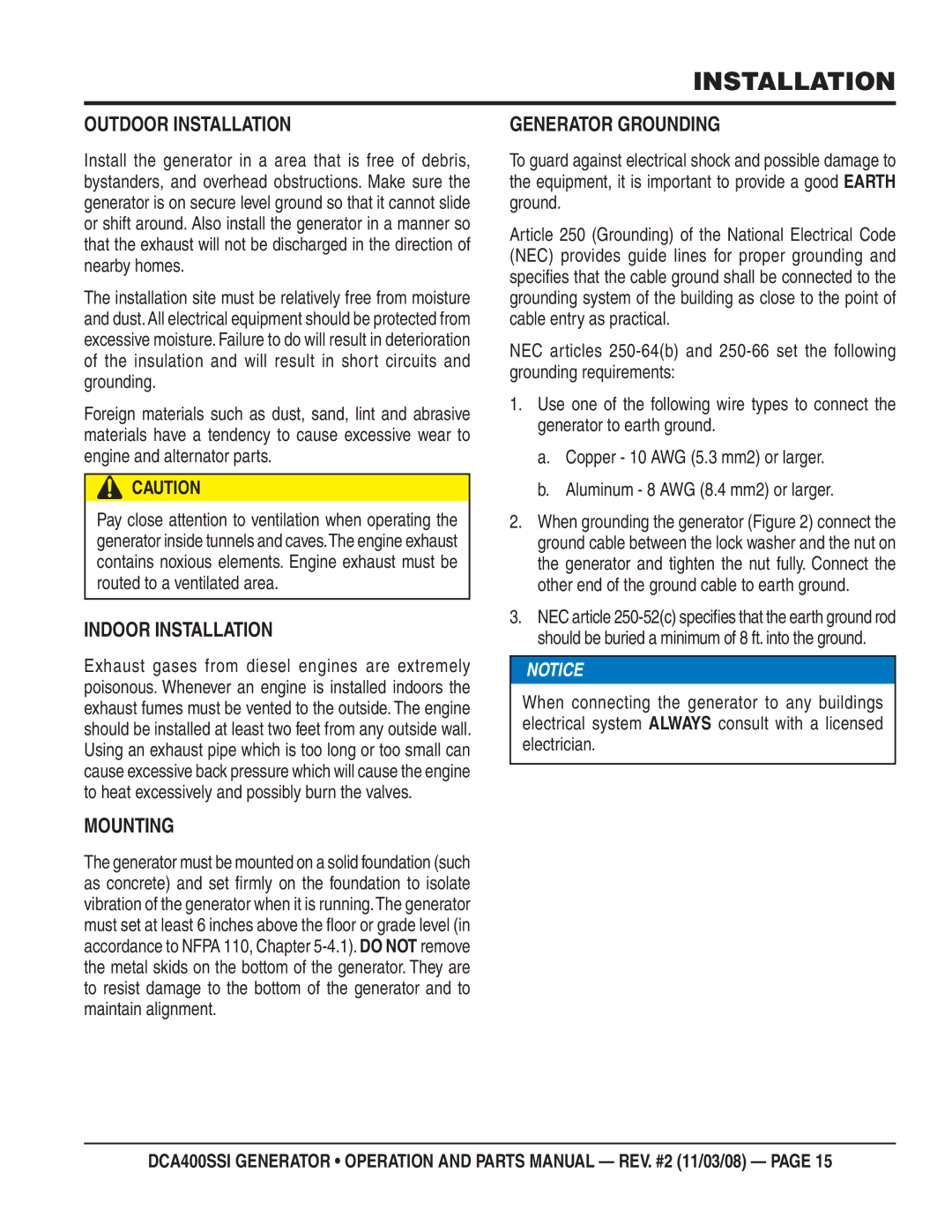DCA400SSI specifications
The Multiquip DCA400SSI is a robust and versatile generator designed for various demanding applications, particularly in construction and industrial settings. This powerful unit is part of Multiquip’s premium line of portable generators, known for their reliability and efficiency.At the heart of the DCA400SSI is a formidable 400 kW diesel engine that provides exceptional power output while maintaining optimal performance. The generator features a highly efficient cooling system that ensures the engine operates within safe temperature ranges, thus extending its lifespan. Additionally, the DCA400SSI integrates sound attenuation technology that minimizes noise levels, making it suitable for use in noise-sensitive environments such as residential areas or during night-time operations.
One of the standout features of the DCA400SSI is its advanced digital controller. This state-of-the-art technology offers enhanced monitoring and control capabilities, allowing users to easily adjust settings and monitor essential parameters such as voltage, frequency, and running hours. The digital controller includes protective features that safeguard the engine against potential damage, thereby enhancing reliability during operation.
The DCA400SSI also emphasizes user-friendliness. Its intuitive control panel and easy-to-read displays ensure that operators can quickly understand and manage the generator's functions. This is particularly important in emergency situations or during critical operations when time is of the essence. The generator is designed with mobility in mind, equipped with heavy-duty wheels and a sturdy frame, allowing for easy transportation across job sites.
In terms of fuel efficiency, the DCA400SSI stands out with an extended fuel tank that supports longer operation times between refueling. This characteristic is crucial for operations that require continuous power supply without interruptions. The unit’s fuel efficiency is complemented by its eco-friendly emissions level, adhering to stringent environmental regulations, which is vital for contractors seeking sustainable solutions.
Overall, the Multiquip DCA400SSI is engineered to deliver high performance, reliability, and user-friendly operation. Its combination of advanced technologies, operational efficiency, and robust construction makes it an ideal choice for any job that demands dependable power. Whether for construction, industrial applications, or emergency backup, the DCA400SSI continues to reinforce Multiquip's reputation for quality and innovation in the generator market.

